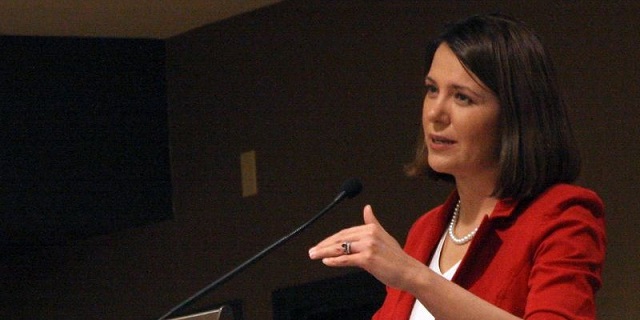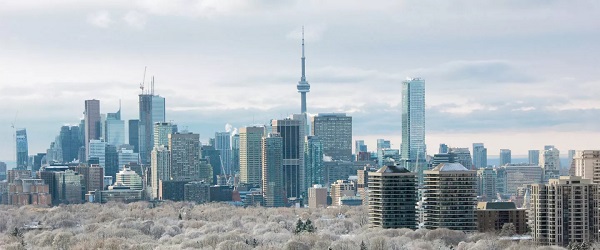Alberta
Alberta government must further restrain spending to stabilize provincial finances

From the Fraser Institute
By Tegan Hill
This year, program spending will reach a projected $14,334 per Albertan, which is $1,603 more per person (inflation-adjusted) than the Smith government originally planned to spend this year as outlined in the 2022 mid-year budget update.
Despite recording a $4.3 billion surplus last year, Premier Danielle Smith remains committed to a new approach to Alberta finances that relies less heavily on resource revenue, which includes restraining spending levels below the rate of inflation and population growth. That’s a big step forward, but is it enough to stabilize Alberta’s boom and bust rollercoaster?
First, some background.
After nearly a decade and a half of routine budget deficits, Alberta swung to a budget surplus when resource revenue (which includes includes oil and gas royalties) skyrocketed from $3.1 billion in 2020/21 to $16.2 billion in 2021/22. In 2022/23, the government enjoyed the highest level of resource revenue on record and relatively high levels have continued in recent years. Correspondingly, Alberta’s surpluses have continued.
Alberta governments have a habit of increasing spending during times of high resource revenue, such as the province is currently experiencing, to levels that are unsustainable without incurring deficits when resource revenue inevitably declines. That’s why the Smith government’s commitment to spending restraint is an important one.
Unfortunately, however, due to the Smith government’s spending increases in previous years, this restraint won’t go as far in stabilizing provincial finances. Moreover, there are a number of limitations and exceptions to these new spending rules that may impede their effectiveness.
Consider that this year, program spending will reach a projected $14,334 per Albertan, which is $1,603 more per person (inflation-adjusted) than the Smith government originally planned to spend this year as outlined in the 2022 mid-year budget update.

As shown above, program spending (inflation-adjusted) will reach a projected $14,041 per person in 2025/26 and a projected $13,750 per person in 2026/27, which is equivalent to per-person increases of $1,571 and $1,538, respectively, compared to the original plan in 2022.
So while per-person (inflation-adjusted) spending is set to decline, which aligns with the Smith government’s commitment, this restraint is starting from a higher base level due to spending decisions thus far. That means more work needs to be done to rein in spending.
Indeed, for perspective, if the Smith government had simply stuck to its original plan, spending would be closely aligned with stable, more predictable sources of revenue. And ultimately, that’s the way to avoid deficits.
There’s also several limitations and exceptions for the government’s new spending rule. For example, the spending limit applies only to “operating expense,” which does not include longer-term spending, disaster and emergency assistance, spending related to dedicated revenue, or contingencies. As a result of various limits and exceptions, total program spending growth in 2023/24 exceeds inflation and population growth by 1.8 percentage points. Put simply, these limitations and exceptions add to the risk of budget deficits.
Sustainable finances have been impeded by increases in per person spending since 2022. So while the Smith government deserves credit for its commitment to restrain spending moving forward, Alberta’s fiscal challenges aren’t over.
Author:
Alberta
Alberta will defend law-abiding gun owners who defend themselves

Alberta’s government will introduce a motion under the Alberta Sovereignty within a United Canada Act to defend law-abiding firearms owners.
A new motion under the Alberta Sovereignty within a United Canada Act will, if passed by the legislature, instruct all provincial entities, including law-enforcement agencies such as municipal police services and the RCMP, to decline to enforce or implement the federal gun seizure program. The motion also makes clear that Albertans have the right to use reasonable force to defend themselves, their families and their homes from intruders.
This builds on the steps Alberta has already taken to reduce crime, strengthen public safety and assert provincial jurisdiction over firearms. This includes passing the Alberta Firearms Act to establish the Alberta Chief Firearms Office, along with the Alberta Firearms Regulation and the Seizure Agent and Provider Licensing Regulation.
“It’s time for Ottawa to stop targeting the wrong people. Albertans have the right to protect their homes and their families. No one should hesitate to defend themselves when faced with a threat at their own doorway. Law-abiding citizens, hunters, farmers and sport shooters are not the source of violent crime, yet the federal government wants to confiscate their property while illegal guns pour across our borders. Alberta will not stand by while responsible gun owners are treated like criminals. This motion is about using every legal tool we have to protect their rights, uphold public safety and push back on federal overreach into provincial jurisdiction.”
“When someone breaks into your home, the law recognizes that you have enhanced rights to protect yourself and your family. Alberta is making that principle unmistakably clear: lawful, reasonable self-defence will be respected, not criminalized.”
“As an experienced former law enforcement officer, law-abiding gun owners have never been an issue, in my own personal experience, nor has there been any data to support that law-abiding gun owners are the ones that are committing violent gun crimes. The illegal guns that you see being used by criminals are typically being smuggled in from the United States. The federal government should help us strengthen the border, helping us to stop illegal guns from coming into Canada. This would further enhance safety and security for the people of Alberta and Canada as opposed to going after lawful gun owners.”
Under the Alberta Firearms Regulation, municipalities, law enforcement and police commissions must obtain approval from Alberta’s Minister of Justice before accepting funding to participate in the Assault-Style Firearms Compensation Program.
“Misguided federal initiatives such as the handgun transfer ban and the Order in Council firearms prohibitions of 2020, 2024 and 2025 have had a devastating impact on the safe, legitimate activities of the firearms community and the businesses that support it, while having no discernible effect on criminal activity. I am proud to see that the Alberta government is pushing back and supporting lawful firearms owners through these measures.”
“Licensed gun owners and all Albertans can rest assured that their government, under the leadership of the UCP, is laser focused on protecting law abiding citizens while prioritizing real public safety.”
“The Alberta Hunter Education Instructors Association will continue to support our government and the Alberta chief firearms officer in our joint quest to use safety training and education as the key tools to ensure we have safer streets and communities. Safe and responsible use of firearms in Alberta is a key part of our heritage, culture, and our rich and precious heritage.”
Key facts:
- Pursuant to the Attorney General’s recent guidance protocols, Alberta’s prosecutors will decline to prosecute offences under the federal gun seizure program when it is not in the public interest.
- The Attorney General’s recent guidance protocol directs prosecutors to not prosecute home defence offences when it is not in the public interest.
- Total spending on the federal Assault-Style Firearms Compensation Program is expected to exceed $750 million.
- The firearms motion considers the Alberta Bill of Rights, the Constitution Act, 1867 and the Criminal Code.
- Currently 10 per cent of adult Albertans are licenced to use and own firearms. There are 381,900 firearms licences in Alberta.
- Alberta has 638 licensed firearms businesses, 138 shooting ranges and 91 shooting clubs.
Alberta
Emissions Reduction Alberta offering financial boost for the next transformative drilling idea

From the Canadian Energy Centre
$35-million Alberta challenge targets next-gen drilling opportunities
‘All transformative ideas are really eligible’
Forget the old image of a straight vertical oil and gas well.
In Western Canada, engineers now steer wells for kilometres underground with remarkable precision, tapping vast energy resources from a single spot on the surface.
The sector is continually evolving as operators pursue next-generation drilling technologies that lower costs while opening new opportunities and reducing environmental impacts.
But many promising innovations never reach the market because of high development costs and limited opportunities for real-world testing, according to Emissions Reduction Alberta (ERA).
That’s why ERA is launching the Drilling Technology Challenge, which will invest up to $35 million to advance new drilling and subsurface technologies.
“The focus isn’t just on drilling, it’s about building our future economy, helping reduce emissions, creating new industries and making sure we remain a responsible leader in energy development for decades to come,” said ERA CEO Justin Riemer.
And it’s not just about oil and gas. ERA says emerging technologies can unlock new resource opportunities such as geothermal energy, deep geological CO₂ storage and critical minerals extraction.
“Alberta’s wealth comes from our natural resources, most of which are extracted through drilling and other subsurface technologies,” said Gurpreet Lail, CEO of Enserva, which represents energy service companies.
ERA funding for the challenge will range from $250,000 to $8 million per project.
Eligible technologies include advanced drilling systems, downhole tools and sensors; AI-enabled automation and optimization; low-impact rigs and fluids; geothermal and critical mineral drilling applications; and supporting infrastructure like mobile labs and simulation platforms.
“All transformative ideas are really eligible for this call,” Riemer said, noting that AI-based technologies are likely to play a growing role.
“I think what we’re seeing is that the wells of the future are going to be guided by smart sensors and real-time data. You’re going to have a lot of AI-driven controls that help operators make instant decisions and avoid problems.”
Applications for the Drilling Technology Challenge close January 29, 2026.
-

 Energy2 days ago
Energy2 days agoCanadians will soon be versed in massive West Coast LPG mega-project
-

 Daily Caller2 days ago
Daily Caller2 days agoTom Homan Predicts Deportation Of Most Third World Migrants Over Risks From Screening Docs
-

 Daily Caller11 hours ago
Daily Caller11 hours agoTech Mogul Gives $6 Billion To 25 Million Kids To Boost Trump Investment Accounts
-

 C2C Journal1 day ago
C2C Journal1 day agoLearning the Truth about “Children’s Graves” and Residential Schools is More Important than Ever
-

 Artificial Intelligence2 days ago
Artificial Intelligence2 days ago‘Trouble in Toyland’ report sounds alarm on AI toys
-

 National1 day ago
National1 day agoMedia bound to pay the price for selling their freedom to (selectively) offend
-

 Alberta1 day ago
Alberta1 day agoNew era of police accountability
-

 Business12 hours ago
Business12 hours agoRecent price declines don’t solve Toronto’s housing affordability crisis



